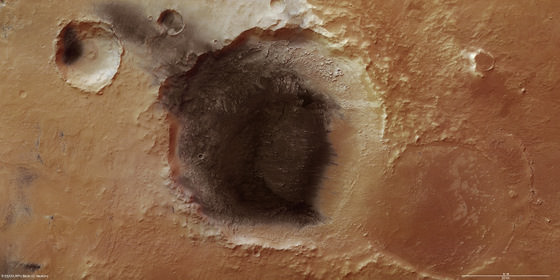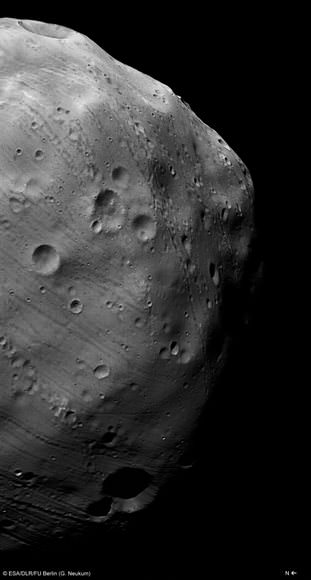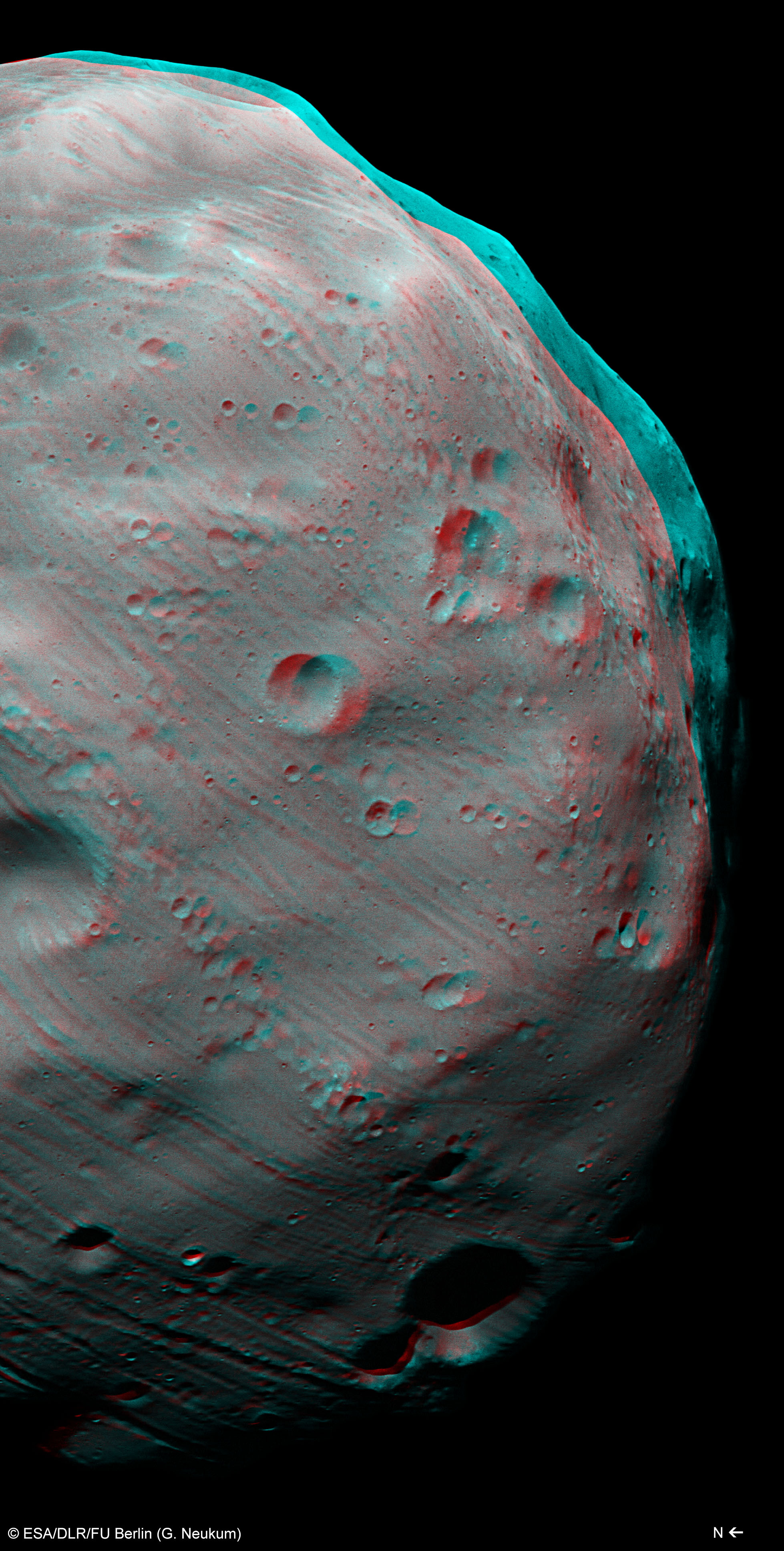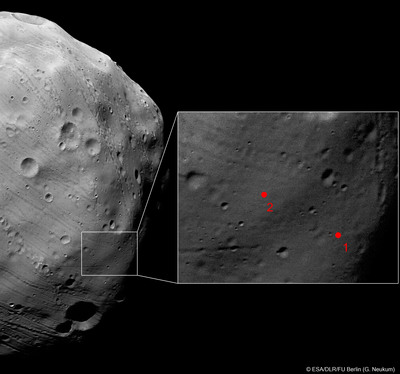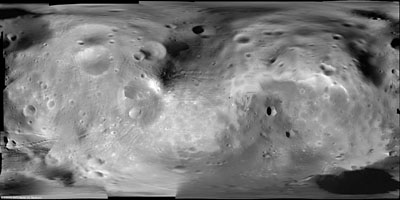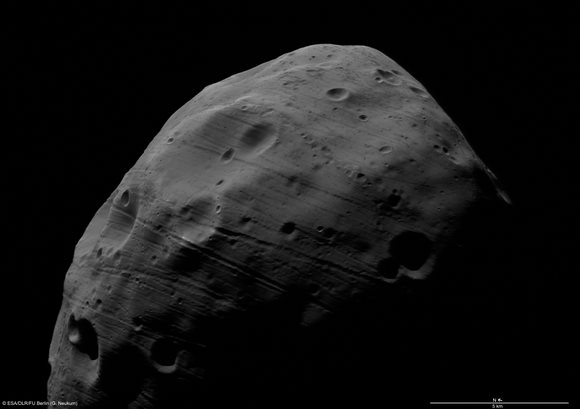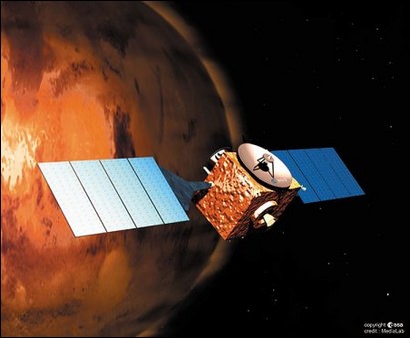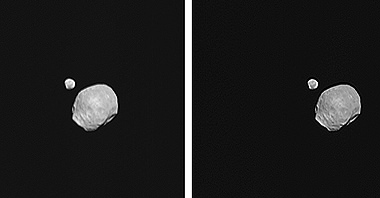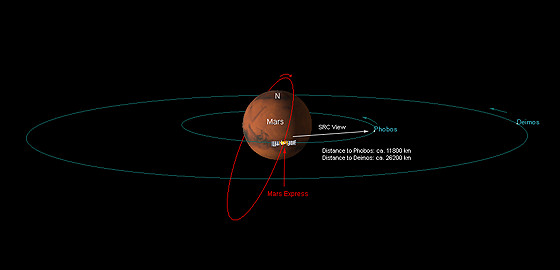[/caption]
Earth isn’t the only place we’re seeing volcanic ash these days. New high resolution color images from ESA’s Mars Express of Meridiani Planum on Mars – the Opportunity rover’s neighborhood — shows evidence of volcanic ash in a small impact crater that is about 50 km wide. The wind-blown dark material also provides clues to the prevailing wind direction in this region of Mars. These images are stunning, especially in the large hi-resolution versions, so click on each image to see Mars up close and personal.
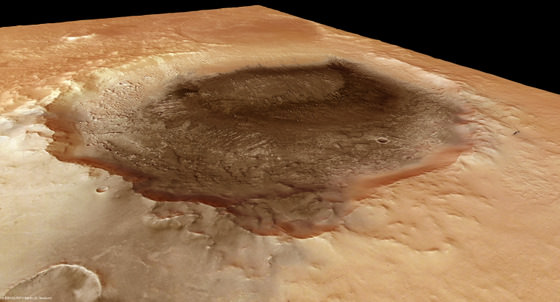
Mars is only about one-half the size of Earth, but yet has several volcanoes larger than anything we have on our home planet. The most massive volcanoes are located on huge uplifts or domes in the Tharsis and Elysium regions of Mars. Meridiani Planum lies close to Tharsis, and is a large plain at the northern edge of the southern highlands of Mars.
Poking through the dark covering are small mounds, probably made of harder, more resistant material. The softer material around them has been eroded and blown out of the crater by north-easterly winds and now lies outside the crater, forming dark streaks at the bottom left of the image.
This dark crater is close to Mars’ equator, and early on this area was chosen as a central reference point for Mars’ geographical coordinate system, so the martian prime meridian runs right through here. Hence the name “Meridiani.”
Meridiani Planum extends 127 km by 63 km and covers an area of roughly 8000 sq km
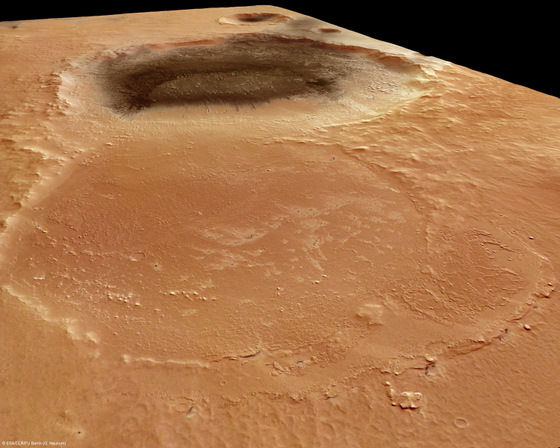
Three craters stretch across Meridiani Planum, as seen in this image. The nearest is an old crater, almost worn away. It is 34 km across. The second is covered in dark material, most likely a substance resembling volcanic ash. It is 50 km wide. The third crater, more distant, is smaller at 15 km wide. Again it possesses a dark floor, perhaps because material from the largest crater has been blown out by the wind and has settled in the smallest one.
The image below gives a broader perspective of the area. The color images were actually taken in 2005 and were just recently released by ESA.


